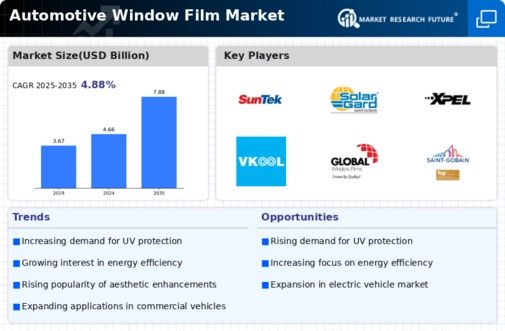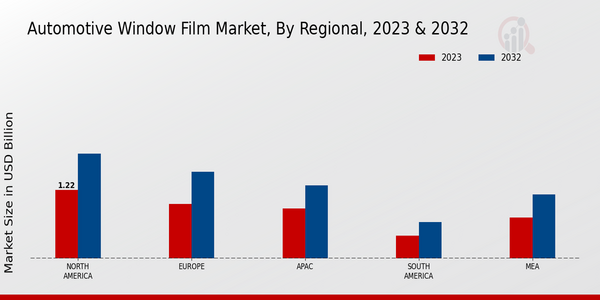The Automotive Window Film Market is characterized by intense competition among key players vying for market share through innovation, quality, and customer engagement. This market encompasses a wide range of products designed to enhance vehicle aesthetics while providing functional benefits such as UV protection, heat rejection, and glare reduction.
The competitive landscape is further shaped by factors such as technological advancements in film materials, evolving consumer preferences, and stringent regulations regarding automotive safety and energy efficiency.
As global automotive trends shift towards sustainability and more energy-efficient vehicles, companies within the window film sector are adapting their strategies to meet these new demands, capitalizing on growing awareness of health and safety benefits associated with window films.
Such dynamics create an environment where market players must constantly assess their competitive positioning and leverage unique advantages to maintain and extend their market presence.
SunTek has established a notable presence within the Automotive Window Film Market by focusing on innovation and high-quality product offerings. Renowned for its state-of-the-art manufacturing techniques and advanced window films, SunTek differentiates itself through product durability and performance.
The company emphasizes features such as enhanced visual clarity, heat rejection, and UV protection, which resonate with consumers’ desire for both comfort and safety. Furthermore, SunTek invests in research and development to continuously evolve its product line, allowing it to cater to diverse market segments and geographic regions.
This commitment to quality and innovation empowers SunTek to respond effectively to customer needs, making it a formidable contender in the competitive automotive window film landscape. Solar Gard is another influential entity in the Automotive Window Film Market, leveraging its established reputation and extensive product range to maintain a competitive edge.
Known for its commitment to sustainability, Solar Gard emphasizes environmentally friendly manufacturing processes and materials, appealing to the growing market segment that values eco-conscious products. The company also focuses on providing a wide spectrum of window film solutions, including premium options that prioritize both aesthetics and functionality.
With a strong distribution network and effective marketing strategies, Solar Gard has successfully positioned itself to reach diverse customer bases, ensuring that its products are widely accessible.
In addition to its strong brand presence, Solar Gard's dedication to customer service and satisfaction plays a crucial role in its competitive positioning, allowing it to build lasting relationships with consumers and partners within the automotive sector.
























